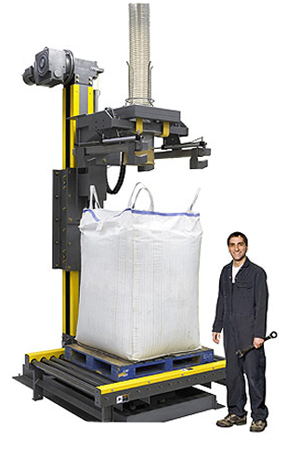 As was pointed out in an earlier blog post "How Big is A Bulk Bag", there is no such thing as a 'standard' sized bulk bag. The base or bottom seam dimensions are generally sized to fit within the mode of shipping to be used (shipping container, truck trailer, etc.) and/or to fit properly on the selected pallet.
As was pointed out in an earlier blog post "How Big is A Bulk Bag", there is no such thing as a 'standard' sized bulk bag. The base or bottom seam dimensions are generally sized to fit within the mode of shipping to be used (shipping container, truck trailer, etc.) and/or to fit properly on the selected pallet.
Depending on the bulk density of the product and its characteristics, the bulk bag's height can be significantly affected by the bulk bag filling technology employed. And, this can be a source of lucrative operating cost savings!
If your product's packed bulk density is around 35 lb/cu ft or less and its loose bulk density is more than 10-15% less than that, chances are reasonable that you are not able to achieve bulk bag weights of 2,000 to 2,205 lb using bulk bags sized to fit within a shipping container or a truck trailer.
If that's the case, maximum densification during filling can in most cases put more weight into the same sized bulk bag.
When that happens operating cost savings pile up quickly:
- Since you can put more weight in each bag, you can buy fewer bags. A 10% increase in payload weight equals a 10% reduction in the number of bags you have to buy!
- Since you can put more weight in a container or trailer there are fewer shipments that must be made and each shipment carries more weight per container. Once again, a 10% increase in payload weight reduces the number of containers thereby reducing shipping costs. This can be a HUGE cost savings!
So, if you are unable to currently achieve one ton/tonne payload weights in your bulk bags investigate using bulk bag filling technology that will mazimize densification. You may be able to put tens and even hundreds of thousands of dollars onto your plant's profit line by increasing the payload weight of your current sized bulk bags !


